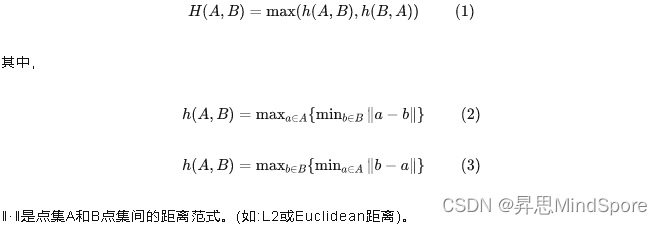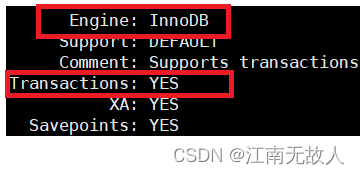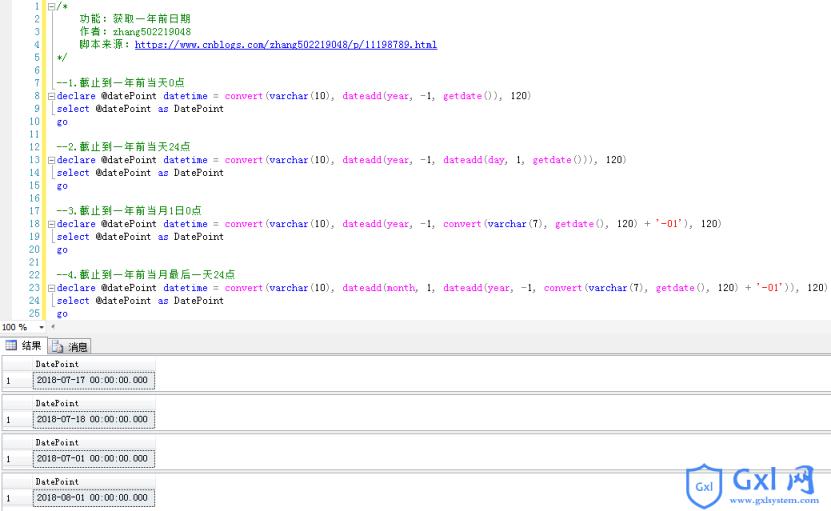当前位置:网站首页>MMDetection实战:MMDetection训练与测试
MMDetection实战:MMDetection训练与测试
2022-08-05 10:47:00 【华为云】
@[toc]
摘要
MMDetection是商汤和港中文大学针对目标检测任务推出的一个开源项目,它基于Pytorch实现了大量的目标检测算法,把数据集构建、模型搭建、训练策略等过程都封装成了一个个模块,通过模块调用的方式,我们能够以很少的代码量实现一个新算法,大大提高了代码复用率。
GitHub链接:https://github.com/open-mmlab/mmdetection。
Gitee链接:https://gitee.com/open-mmlab/mmdetection。
主分支代码目前支持 PyTorch 1.5 以上的版本。主要特性:
模块化设计
MMDetection 将检测框架解耦成不同的模块组件,通过组合不同的模块组件,用户可以便捷地构建自定义的检测模型
丰富的即插即用的算法和模型
MMDetection 支持了众多主流的和最新的检测算法,例如 Faster R-CNN,Mask R-CNN,RetinaNet 等。
速度快
基本的框和 mask 操作都实现了 GPU 版本,训练速度比其他代码库更快或者相当,包括 Detectron2, maskrcnn-benchmark 和 SimpleDet。
性能高
MMDetection 这个算法库源自于 COCO 2018 目标检测竞赛的冠军团队 MMDet 团队开发的代码,之后持续进行了改进和提升。
配置文件参数详解
faster_rcnn_r50_fpn_1x_coco.py文件为例,这个文件包含四个文件,分别是:faster_rcnn_r50_fpn.py、coco_detection.py、schedule_1x.py、default_runtime.py。
configs/_base_/schedules/schedule_1x.py
optimizer = dict(type='SGD', lr=0.02, momentum=0.9, weight_decay=0.0001)# 设置优化器类型optimizer_config = dict(grad_clip=None) # 梯度裁剪配置#optimizer_config = dict(# _delete_=True, grad_clip=dict(max_norm=35, norm_type=2))# lr 参数lr_config = dict( policy='step', # lr decay的方式,其余的还有consine cyclic warmup='linear', # 初始的学习率增加的策略为线性增加 warmup_iters=500, # warmup迭代500次 warmup_ratio=0.001, # warmup的初始学习比率。 step=[8, 11]) # 在8-11个epoch后开始进行lr decayrunner = dict(type='EpochBasedRunner', max_epochs=12) # runner配置,默认epoch为12faster_rcnn_r50_fpn.py
# model settingsmodel = dict( type='FasterRCNN',#model类型 backbone=dict( type='ResNet',#backone类型 depth=50,#网络层数 num_stages=4,# resnet的stage数量 out_indices=(0, 1, 2, 3), # 输出的stage的序号 frozen_stages=1,# 冻结的stage数量,即该stage不更新参数,-1表示所有的stage都更新参数 norm_cfg=dict(type='BN', requires_grad=True),#表示所采用的归一化算子,一般是 BN 或者 GN。requires_grad 表示该算子是否需要梯度,也就是是否进行参数更新 norm_eval=True,#控制整个骨架网络的归一化算子是否需要变成 eval 模式 style='pytorch',# 网络风格:如果设置pytorch,则stride为2的层是conv3x3的卷积层;如果设置caffe,则stride为2的层是第一个conv1x1的卷积层 init_cfg=dict(type='Pretrained', checkpoint='torchvision://resnet50')),# 表明backbone使用预训练参数,标注其位置 neck=dict( type='FPN',# FPN特征融合neck in_channels=[256, 512, 1024, 2048],# FPN接受的channels,和backnone resnet的stage2-5的输出channels对应 out_channels=256,# feature pyramid每一层的输出channel数 num_outs=5),# 输出的feature pyramid特征层数 rpn_head=dict( type='RPNHead',# RPN网络类型 in_channels=256,# RPN网络的输入通道数 feat_channels=256,# 特征层的通道数 anchor_generator=dict( type='AnchorGenerator', scales=[8],# 生成的anchor的baselen,baselen = sqrt(w*h),w和h为anchor的宽和高 ratios=[0.5, 1.0, 2.0],# anchor的宽高比 strides=[4, 8, 16, 32, 64]),# 在每个特征层上的anchor的步长(对应于原图) bbox_coder=dict( type='DeltaXYWHBBoxCoder', target_means=[.0, .0, .0, .0],# 均值 target_stds=[1.0, 1.0, 1.0, 1.0]),# 均值 loss_cls=dict( type='CrossEntropyLoss', use_sigmoid=True, loss_weight=1.0), loss_bbox=dict(type='L1Loss', loss_weight=1.0)), roi_head=dict( type='StandardRoIHead', bbox_roi_extractor=dict( type='SingleRoIExtractor', roi_layer=dict(type='RoIAlign', output_size=7, sampling_ratio=0), out_channels=256, featmap_strides=[4, 8, 16, 32]), bbox_head=dict( type='Shared2FCBBoxHead',# 对应head类 in_channels=256,# head接受的是feature pyramid的输出,in_channels表示进入head时的通道数是256 fc_out_channels=1024, roi_feat_size=7, num_classes=80,# 使用coco数据集,所以是80类 bbox_coder=dict( type='DeltaXYWHBBoxCoder', target_means=[0., 0., 0., 0.], target_stds=[0.1, 0.1, 0.2, 0.2]), reg_class_agnostic=False, loss_cls=dict( type='CrossEntropyLoss', use_sigmoid=False, loss_weight=1.0), loss_bbox=dict(type='L1Loss', loss_weight=1.0))), # model training and testing settings train_cfg=dict( rpn=dict( assigner=dict( type='MaxIoUAssigner',# RPN网络的正负样本划分 pos_iou_thr=0.7,# RPN网络的正负样本划分 neg_iou_thr=0.3,# 负样本的iou阈值 min_pos_iou=0.3,# 正样本的iou最小值。如果assign给ground truth的anchors中最大的IOU低于0.3,则忽略所有的anchors,否则保留最大IOU的anchor match_low_quality=True, ignore_iof_thr=-1),# 忽略bbox的阈值,当ground truth中包含需要忽略的bbox时使用,-1表示不忽略 sampler=dict( type='RandomSampler',# 正负样本提取器类型 num=256,# 需提取的正负样本数量 pos_fraction=0.5,# 正样本比例 neg_pos_ub=-1,# 最大负样本比例,大于该比例的负样本忽略,-1表示不忽略 add_gt_as_proposals=False),# 把ground truth加入proposal作为正样本 allowed_border=-1,# 允许在bbox周围外扩一定的像素 pos_weight=-1,# 正样本权重,-1表示不改变原始的权重 debug=False),# debug模式 rpn_proposal=dict( nms_pre=2000, max_per_img=1000, nms=dict(type='nms', iou_threshold=0.7),# nms阈值 min_bbox_size=0), rcnn=dict( assigner=dict( type='MaxIoUAssigner',# RCNN网络正负样本划分 pos_iou_thr=0.5,# 正样本的iou阈值 neg_iou_thr=0.5,# 负样本的iou阈值 min_pos_iou=0.5,# 正样本的iou最小值。如果assign给ground truth的anchors中最大的IOU低于0.3,则忽略所有的anchors,否则保留最大IOU的anchor match_low_quality=False, ignore_iof_thr=-1),# 忽略bbox的阈值,当ground truth中包含需要忽略的bbox时使用,-1表示不忽略 sampler=dict( type='RandomSampler',# 正负样本提取器类型 num=512,# 需提取的正负样本数量 pos_fraction=0.25,# 正样本比例 neg_pos_ub=-1,# 最大负样本比例,大于该比例的负样本忽略,-1表示不忽略 add_gt_as_proposals=True),# 把ground truth加入proposal作为正样本 pos_weight=-1,# 正样本权重,-1表示不改变原始的权重 debug=False)), test_cfg=dict( rpn=dict( nms_pre=1000,# 在nms之前保留的的得分最高的proposal数量 max_per_img=1000, nms=dict(type='nms', iou_threshold=0.7), min_bbox_size=0), # 最小bbox尺寸 rcnn=dict( score_thr=0.05, nms=dict(type='nms', iou_threshold=0.5),# nms阈值 max_per_img=100) # soft-nms is also supported for rcnn testing # e.g., nms=dict(type='soft_nms', iou_threshold=0.5, min_score=0.05) ))环境准备
CUDA:11.3
新建虚拟环境openmm
conda create --name openmm python=3.7然后,激活环境。
Win10执行命令:
activate openmmUBuntu执行命令:
source activate openmm进入虚拟环境后,安装pytorch,输入命令:
conda install pytorch torchvision torchaudio cudatoolkit=11.3
安装mmcv,执行命令:
pip install mmcv-full安装mmcv-full,等待的时间较长。如果不报错误,耐心等待即可。

安装完成后,下载mmdetection, 地址链接:https://gitee.com/open-mmlab/mmdetection。
下载完成后,解压,然后pycharm打开。
添加刚才新建的虚拟环境。


在Terminal中激活openmm虚拟环境,防止虚拟环境没有切换过来。

然后,安装mmdet,在Terminal中执行命令:
python setup.py install在安装mmdet的过程中,会自动下载所需要的安装包。如果存在不能下载的情况,需要单独安装。直到出现下图即可。

验证环境
在工程的根目录新建checkpoints文件夹,下载预训练权重文件,链接:
http://download.openmmlab.com/mmdetection/v2.0/faster_rcnn/faster_rcnn_r50_fpn_1x_coco/faster_rcnn_r50_fpn_1x_coco_20200130-047c8118.pth下载完成后,将其放入到checkpoints文件夹
新建demo.py文件,插入代码:
from mmdet.apis import init_detector, inference_detectorconfig_file = 'configs/faster_rcnn/faster_rcnn_r50_fpn_1x_coco.py'# 从 model zoo 下载 checkpoint 并放在 `checkpoints/` 文件下# 网址为: http://download.openmmlab.com/mmdetection/v2.0/faster_rcnn/faster_rcnn_r50_fpn_1x_coco/faster_rcnn_r50_fpn_1x_coco_20200130-047c8118.pthcheckpoint_file = 'checkpoints/faster_rcnn_r50_fpn_1x_coco_20200130-047c8118.pth'device = 'cuda:0'img='demo/demo.jpg'# 初始化检测器model = init_detector(config_file, checkpoint_file, device=device)# 推理演示图像result=inference_detector(model, img)model.show_result(img, result, out_file='result.jpg')运行代码:

看到这张图说明环境没有问题。
接下来,使用这个环境训练自定义数据集。
训练
制作数据集
Labelme标注的数据集地址链接:
https://download.csdn.net/download/hhhhhhhhhhwwwwwwwwww/63242994?spm=1001.2014.3001.5503
有32个类别,分别是:‘c17’, ‘c5’, ‘helicopter’, ‘c130’, ‘f16’, ‘b2’, ‘other’, ‘b52’, ‘kc10’, ‘command’, ‘f15’, ‘kc135’, ‘a10’, ‘b1’, ‘aew’, ‘f22’, ‘p3’, ‘p8’, ‘f35’, ‘f18’, ‘v22’, ‘f4’, ‘globalhawk’, ‘u2’, ‘su-27’, ‘il-38’, ‘tu-134’, ‘su-33’, ‘an-70’, ‘su-24’, ‘tu-22’, ‘il-76’。
先将其转为COCO数据集,转换代码如下:
# -*- coding:utf-8 -*-# !/usr/bin/env pythonimport jsonimport osimport shutilfrom labelme import utilsimport numpy as npimport globimport PIL.Imagelabels={'c17':0,'c5':1,'helicopter':2,'c130':3,'f16':4, 'b2':5,'other':6,'b52':7,'kc10':8,'command':9,'f15':10, 'kc135':11,'a10':12,'b1':13,'aew':14,'f22':15,'p3':16,'p8':17, 'f35':18,'f18':19,'v22':20,'f4':21,'globalhawk':22,'u2':23,'su-27':24, 'il-38':25,'tu-134':26,'su-33':27,'an-70':28,'su-24':29,'tu-22':30,'il-76':31}class MyEncoder(json.JSONEncoder): def default(self, obj): if isinstance(obj, np.integer): return int(obj) elif isinstance(obj, np.floating): return float(obj) elif isinstance(obj, np.ndarray): return obj.tolist() else: return super(MyEncoder, self).default(obj)class labelme2coco(object): def __init__(self, labelme_json=[], save_json_path='./tran.json'): ''' :param labelme_json: 所有labelme的json文件路径组成的列表 :param save_json_path: json保存位置 ''' self.labelme_json = labelme_json self.save_json_path = save_json_path self.images = [] self.categories = [] self.annotations = [] # self.data_coco = {} self.label = [] self.annID = 1 self.height = 0 self.width = 0 self.save_json() def data_transfer(self): for num, json_file in enumerate(self.labelme_json): imagePath=json_file.split('.')[0]+'.jpg' imageName=imagePath.split('\\')[-1] # print(imageName) with open(json_file, 'r') as fp: data = json.load(fp) # 加载json文件 self.images.append(self.image(data, num,imageName)) for shapes in data['shapes']: label = shapes['label'].lower() if label not in self.label: self.categories.append(self.categorie(label)) self.label.append(label) points = shapes['points'] # 这里的point是用rectangle标注得到的,只有两个点,需要转成四个点 # points.append([points[0][0],points[1][1]]) # points.append([points[1][0],points[0][1]]) self.annotations.append(self.annotation(points, label, num)) self.annID += 1 def image(self, data, num,imagePath): image = {} img = utils.img_b64_to_arr(data['imageData']) # 解析原图片数据 # img=io.imread(data['imagePath']) # 通过图片路径打开图片 # img = cv2.imread(data['imagePath'], 0) height, width = img.shape[:2] img = None image['height'] = height image['width'] = width image['id'] = num + 1 # image['file_name'] = data['imagePath'].split('/')[-1] image['file_name'] = imagePath self.height = height self.width = width return image def categorie(self, label): categorie = {} categorie['supercategory'] = 'Cancer' categorie['id'] = labels[label] # 0 默认为背景 categorie['name'] = label return categorie def annotation(self, points, label, num): annotation = {} annotation['segmentation'] = [list(np.asarray(points).flatten())] annotation['iscrowd'] = 0 annotation['image_id'] = num + 1 # annotation['bbox'] = str(self.getbbox(points)) # 使用list保存json文件时报错(不知道为什么) # list(map(int,a[1:-1].split(','))) a=annotation['bbox'] 使用该方式转成list annotation['bbox'] = list(map(float, self.getbbox(points))) annotation['area'] = annotation['bbox'][2] * annotation['bbox'][3] # annotation['category_id'] = self.getcatid(label) annotation['category_id'] = self.getcatid(label) # 注意,源代码默认为1 # print(label,annotation['category_id']) annotation['id'] = self.annID return annotation def getcatid(self, label): for categorie in self.categories: if label == categorie['name']: return categorie['id'] return 1 def getbbox(self, points): # img = np.zeros([self.height,self.width],np.uint8) # cv2.polylines(img, [np.asarray(points)], True, 1, lineType=cv2.LINE_AA) # 画边界线 # cv2.fillPoly(img, [np.asarray(points)], 1) # 画多边形 内部像素值为1 polygons = points mask = self.polygons_to_mask([self.height, self.width], polygons) return self.mask2box(mask) def mask2box(self, mask): '''从mask反算出其边框 mask:[h,w] 0、1组成的图片 1对应对象,只需计算1对应的行列号(左上角行列号,右下角行列号,就可以算出其边框) ''' # np.where(mask==1) index = np.argwhere(mask == 1) rows = index[:, 0] clos = index[:, 1] # 解析左上角行列号 left_top_r = np.min(rows)+1 # y left_top_c = np.min(clos)+1 # x # 解析右下角行列号 right_bottom_r = np.max(rows) right_bottom_c = np.max(clos) # return [(left_top_r,left_top_c),(right_bottom_r,right_bottom_c)] # return [(left_top_c, left_top_r), (right_bottom_c, right_bottom_r)] # return [left_top_c, left_top_r, right_bottom_c, right_bottom_r] # [x1,y1,x2,y2] return [left_top_c, left_top_r, right_bottom_c - left_top_c, right_bottom_r - left_top_r] # [x1,y1,w,h] 对应COCO的bbox格式 def polygons_to_mask(self, img_shape, polygons): mask = np.zeros(img_shape, dtype=np.uint8) mask = PIL.Image.fromarray(mask) xy = list(map(tuple, polygons)) PIL.ImageDraw.Draw(mask).polygon(xy=xy, outline=1, fill=1) mask = np.array(mask, dtype=bool) return mask def data2coco(self): data_coco = {} data_coco['images'] = self.images data_coco['categories'] = self.categories data_coco['annotations'] = self.annotations return data_coco def save_json(self): self.data_transfer() self.data_coco = self.data2coco() # 保存json文件 json.dump(self.data_coco, open(self.save_json_path, 'w'), indent=4, cls=MyEncoder) # indent=4 更加美观显示def copy_image(dirs,files,image_type): for txt in files: image_path=txt.split('.')[0]+"."+image_type image_name=image_path.replace('\\','/').split('/')[-1] new_path=os.path.join(dirs,image_name) shutil.copyfile(image_path, new_path)labelme_json = glob.glob('USA-Labelme/*.json')from sklearn.model_selection import train_test_splittrainval_files, test_files = train_test_split(labelme_json, test_size=0.2, random_state=55)print(trainval_files)os.makedirs('train2017',exist_ok=True)os.makedirs('val2017',exist_ok=True)copy_image('train2017',trainval_files,'jpg')copy_image('val2017',test_files,'jpg')labelme2coco(trainval_files, 'instances_train2017.json')labelme2coco(test_files, 'instances_val2017.json')在mmdetection-master的根目录下面,新建data文件夹,然后再data文件夹下面新建coco文件夹,在coco文件夹下面新建annotations文件夹,将训练集和验证集的json放进去。将train2017文件夹和val2017文件夹放到coco文件夹下面,目录如下:
mmdetection├── data│ ├── coco│ │ ├── annotations│ │ ├── train2017│ │ └── val2017如下图:

到这里数据集制作完成了。
修改配置文件
configs/算法/配置文件。打开配置文件修改num_classes的个数,COCO默认是80,我们按照实际的类别修改即可。
例:configs/yolo/yolov3_d53_mstrain-608_273e_coco.py

但是,有的模型在的类别找不到,那么我们如何找到呢?比如
configs/ssd/ssd300_coco.py,这个配置文件里面就没有num_classes这个字段,我们寻找最上面的_base_字段。

也有ssd300.py这个文件,将其打开。

找到了num_classes这个字段,将其修改为数据集的类别个数。我们本次使用的数据集的类别是32,所以将其修改为32。
修改该学习率,路径“configs/ssd/ssd300_coco.py”。如下图:

将2e-3改为2e-4,否则会出现loss为NAN的问题。
修改该BatchSize,路径“configs/ssd/ssd300_coco.py”。如下图:

这是针对每张显卡设置Batchsize。调整到合适的大小就可以训练了。
修改epoch,在configs/ssd/ssd300_coco.py中添加
runner = dict(type='EpochBasedRunner', max_epochs=500)
修改数据集的类别
mmdet/core/evaluation/classnames.py找到def coco_classes():将COCO类别替换为自己数据的类别。本例是:
def coco_classes(): return [ 'c17', 'c5', 'helicopter', 'c130', 'f16', 'b2', 'other', 'b52', 'kc10', 'command', 'f15', 'kc135', 'a10', 'b1', 'aew', 'f22', 'p3', 'p8', 'f35', 'f18', 'v22', 'f4', 'globalhawk', 'u2', 'su-27', 'il-38', 'tu-134', 'su-33', 'an-70', 'su-24', 'tu-22', 'il-76']mmdet/datasets/coco.py找到class CoCoDataset(CustomDataset):将COCO的类别替换为自己数据集的类别。本例如下:
class CocoDataset(CustomDataset): CLASSES = ('c17', 'c5', 'helicopter', 'c130', 'f16', 'b2', 'other', 'b52', 'kc10', 'command', 'f15', 'kc135', 'a10', 'b1', 'aew', 'f22', 'p3', 'p8', 'f35', 'f18', 'v22', 'f4', 'globalhawk', 'u2', 'su-27', 'il-38', 'tu-134', 'su-33', 'an-70', 'su-24', 'tu-22', 'il-76') PALETTE = [(220, 20, 60), (119, 11, 32), (0, 0, 142), (0, 0, 230), (106, 0, 228), (0, 60, 100), (0, 80, 100), (0, 0, 70), (0, 0, 192), (250, 170, 30), (100, 170, 30), (220, 220, 0), (175, 116, 175), (250, 0, 30), (165, 42, 42), (255, 77, 255), (0, 226, 252), (182, 182, 255), (0, 82, 0), (120, 166, 157), (110, 76, 0), (174, 57, 255), (199, 100, 0), (72, 0, 118), (255, 179, 240), (0, 125, 92), (209, 0, 151), (188, 208, 182), (0, 220, 176), (255, 99, 164), (92, 0, 73), (133, 129, 255)]开始训练
由于修改了参数,在训练之前还要重新编译一次。否则之前修改的参数不会生效。再次执行命令:
python setup.py install 
然后就可以开始训练了。执行命令:
python tools/train.py configs/ssd/ssd300_coco.py 对train.py重要参数的解析:
对train.py重要参数的解析:
--work-dir:指定训练保存模型和日志的路径--resume-from:从预训练模型chenkpoint中恢复训练--no-validate:训练期间不评估checkpoint--gpus:指定训练使用GPU的数量(仅适用非分布式训练)--gpu-ids: 指定使用哪一块GPU(仅适用非分布式训练)--seed:随机种子--deterministic:是否为CUDNN后端设置确定性选项--options: arguments in dict--launcher: {none,pytorch,slurm,mpi} job launcher--local_rank: LOCAL_RANK--autoscale-lr: automatically scale lr with the number of
测试
测试执行代码:
python tools/test.py configs/ssd/ssd300_coco.py work_dirs/ssd300_coco/epoch_348.pth --out ./test_result/mask_rcnn_r50_fpn_1x/latest.pkl --eval bbox segm --show
然后我们就可以看到测试结果:

完整代码和数据集:
https://download.csdn.net/download/hhhhhhhhhhwwwwwwwwww/85331635
边栏推荐
- High-quality DeFi application building guide to help developers enjoy DeFi Summer
- Common operations of oracle under linux and daily accumulation of knowledge points (functions, timed tasks)
- SkiaSharp 之 WPF 自绘 投篮小游戏(案例版)
- 数据可视化(一)
- nyoj754 黑心医生 结构体优先队列
- Data Middle Office Construction (10): Data Security Management
- Microcontroller: temperature control DS18B20
- 什么是 DevOps?看这一篇就够了!
- 【Office】Microsoft Office下载地址合集(微软官方原版离线安装下载)
- 数据可视化(二)
猜你喜欢

【OpenCV】-仿射变换

Technical dry goods | Hausdorff distance for image segmentation based on MindSpore

MySQL transactions

sqlserver编写通用脚本实现获取一年前日期的方法

abc262-D(dp)

three.js debugging tool dat.gui use

Opencv算术操作

【MySQL基础】-【数据处理之增删改】

The century-old Nordic luxury home appliance brand ASKO smart wine cabinet in the three-temperature area presents the Chinese Valentine’s Day, and tastes the love of the delicacy

我们的Web3创业项目,黄了
随机推荐
气象数据数据处理实例——matlab字符串切割匹配与R语言日期匹配(数据拼接)
STM32+ULN2003 drives 28BYJ4 stepper motor (forward and reverse according to the number of turns)
Confessing in the era of digital transformation: Mai Cong Software allows enterprises to use data in the easiest way
R语言ggplot2可视化:可视化密度图(Density plot)、可视化多个分组的密度图、数据点分布在箱图中间、添加主标题、副标题、题注信息
第六章:activiti流程分流判断之排它网关和并行网关
基于MindSpore高效完成图像分割,实现Dice!
abc262-D(dp)
阿里全新推出:微服务突击手册,把所有操作都写出来了PDF
电气工程的标准是什么
[Android]如何使用RecycleView in Kotlin project
【综合类型第 35 篇】程序员的七夕浪漫时刻
linux下oracle常见操作以及日常积累知识点(函数、定时任务)
The host computer develops C# language: simulates the STC serial port assistant to receive the data sent by the microcontroller
Login function and logout function (St. Regis Takeaway)
Go编译原理系列6(类型检查)
2022杭电多校 第6场 1008.Shinobu Loves Segment Tree 规律题
The fuse: OAuth 2.0 four authorized login methods must read
nyoj754 黑心医生 结构体优先队列
2022 Hangzhou Electric Power Multi-School Session 6 1008.Shinobu Loves Segment Tree Regular Questions
使用Windbg过程中两个使用细节分享